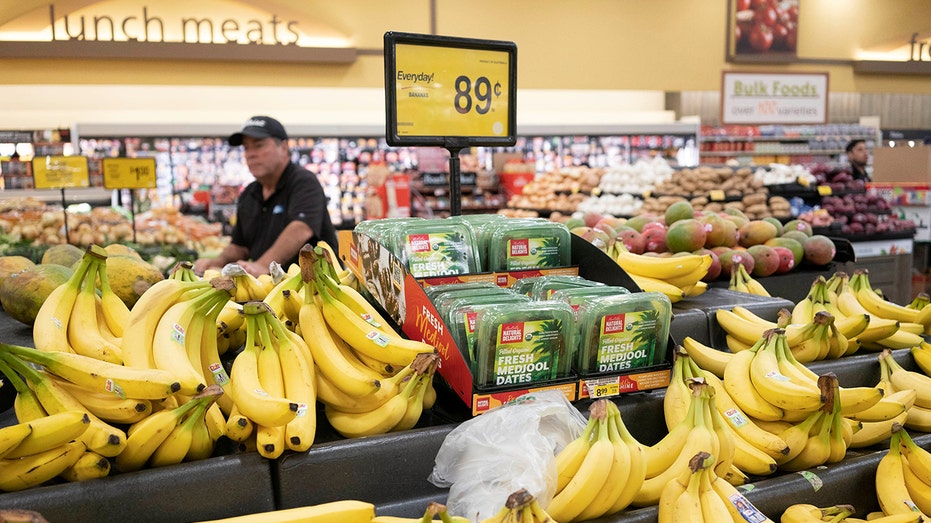US faces increased stagflation threat in 2023 after wave of government spending
Investors remain 'uber-bearish' about US economy as inflation stays high
Larry Kudlow: Omnibus bill was a 'terrible mistake'
FOX Business host Larry Kudlow reacts to the omnibus bill, Sen. Mitch McConnell's photo-op with Biden and Rep. Kevin McCarthy's struggle to win his House speaker bid on 'Making Money.'
Stubbornly high consumer prices, a wave of government spending and a hawkish Federal Reserve determined to bring inflation under control even if it means imperiling the U.S. economy has experts worried about the possibility of a 1970s-style "stagflation" crisis this year.
An overwhelming majority of Wall Street investors anticipate that stagflation will pose the biggest risk to the global economy in 2023, continuing to create volatility in the stock market, according to a recent Bank of America pulse survey.
Around 92% of fund managers expect a period of high inflation and low economic growth next year, while 0% are forecasting a Goldilocks scenario, in which the economy avoids a recession and inflation slows.
"Investor sentiment remained uber-bearish," the survey said. "Investors kept cash levels high at 6.2%, just below last month’s 21-year peak of 6.3%. Additionally, net 77% are calling for a global recession."
US ECONOMY FACES TURBULENT 2023 AS RECESSION FEARS GROW

President Biden appears in Covington, Kentucky, on Wednesday to highlight his economic plan on rebuilding infrastructure and creating good paying jobs that don't require a four-year degree and revitalize communities left behind. (Peter Zay/Anadolu Agency via Getty Images / Getty Images)
The responses indicate the stock market could be in for another rocky year after central bank tightening, stubbornly high inflation and the Russian war in Ukraine already sparked a multitrillion-dollar carnage.
Fueling the price spike are several issues related to government stimulus, the pandemic and the rousing economic rebound from the worst downturn in nearly a century. In the wake of lockdown orders that saw a broad swath of the country shuttered, the economy staged a stunning comeback, powered by unprecedented levels of government spending, emergency steps by the Fed and the widespread distribution of vaccines.
Since the pandemic began in February 2020, lawmakers approved a stunning $6 trillion in pandemic-related stimulus money. That includes about $4 trillion under former President Donald Trump and about $2 trillion under President Biden, according to a COVID money tracker published by the Committee for a Responsible Federal Budget, a nonpartisan organization based in Washington, D.C.
About $5.5 trillion of that has been spent or earmarked for future use.
On top of that, a bipartisan group of lawmakers approved another $1.2 trillion infrastructure bill in late 2021, while Democrats passed another $400 billion health care and climate change spending package in the fall. Congress passed the $1.7 trillion omnibus budget bill in December.
The deluge of government spending threatens to keep inflation high for some time and undercut actions by the U.S. central bank to curtail prices.
GET FOX BUSINESS ON THE GO BY CLICKING HERE

Federal Reserve Chair Jerome Powell speaks during a news conference on interest rates, the economy and monetary policy actions at the Federal Reserve Building in Washington, D.C., on June 15, 2022. (OLIVIER DOULIERY/AFP via Getty Images / Getty Images)
Fed policymakers already approved seven straight interest rate hikes in 2022, pushing the federal funds rate to the highest level since 2007. With high inflation persisting, policymakers have shown no sign of slowing down and have indicated they plan to keep rates higher, for longer.
"Participants generally observed that a restrictive policy stance would need to be maintained until the incoming data provided confidence that inflation was on a sustained downward path to 2 percent, which was likely to take some time," the Fed's December meeting minutes, released Wednesday, said. "In view of the persistent and unacceptably high level of inflation, several participants commented that historical experience cautioned against prematurely loosening monetary policy."
In a troubling development, the Fed's rate hikes have thus far failed to tame inflation: The government reported last month that the consumer price index soared 7.1% in November from the previous year. While that's down slightly from a peak of 9.1% in June, it remains about three times higher than the Fed's preferred target of 2%.
That indicates the Fed will have to continue charting its aggressive course, raising the odds that it will crush consumer demand and cause unemployment to rise. High unemployment, slow economic growth and hot inflation are all characteristics of stagflation, a phenomenon that ravaged the U.S. economy in the 1970s and early 1980s.

A customer shops at a supermarket in Millbrae, California, on Aug. 10, 2022. (Li Jianguo/Xinhua via Getty Images / Getty Images)
At the time, spiking oil prices, rising unemployment and easy monetary policy pushed inflation as high as 14.8% in 1980, forcing Fed policymakers to raise interest rates to nearly 20% that year.
There is a growing expectation on Wall Street that the Fed will trigger an economic downturn as it raises interest rates at the fastest pace in three decades to catch up with runaway inflation.
CLICK HERE TO READ MORE ON FOX BUSINESS
Hiking interest rates tends to create higher rates on consumer and business loans, which slows the economy by forcing employers to cut back on spending.
Goldman Sachs, Deutsche Bank, Bank of America and Wells Fargo are among the Wall Street banks forecasting a downturn this year, although the severity of it remains undetermined.





















